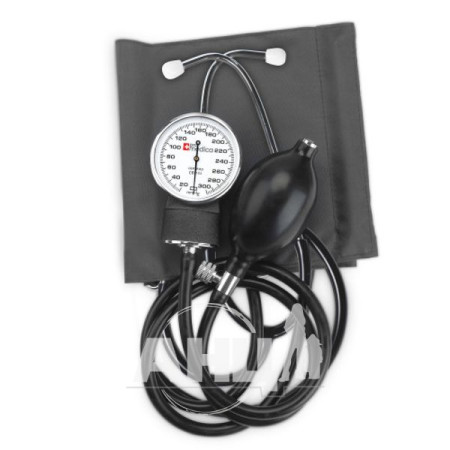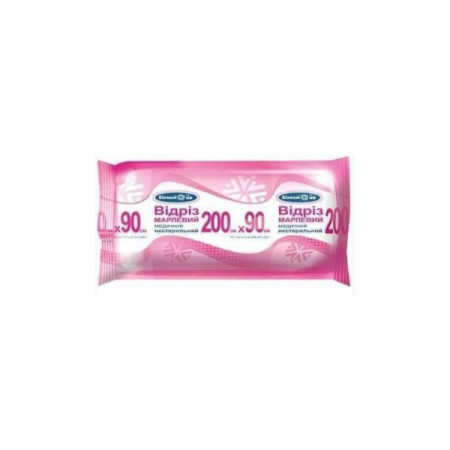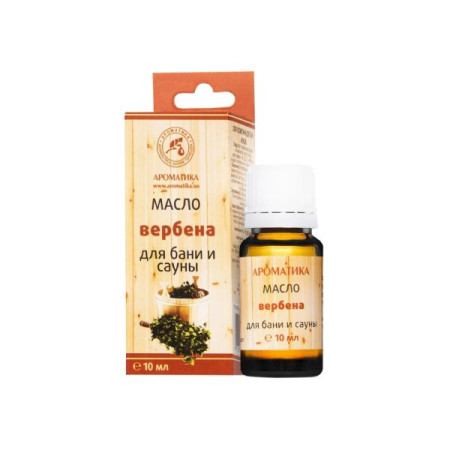Physiotens film-coated tablets 0.4 mg blister No. 28

Instructions Physiotens film-coated tablets 0.4 mg blister No. 28
Composition
active ingredient: moxonidine;
1 tablet contains moxonidine 0.2 mg or 0.3 mg or 0.4 mg;
excipients: lactose monohydrate; povidone K25; crospovidone; magnesium stearate; tablet shell: hypromellose, ethylcellulose aqueous dispersion 30%, macrogol 6000, talc, red iron oxide (E 172), titanium dioxide (E 171).
Dosage form
Film-coated tablets.
Main physicochemical properties:
0.2 mg tablets – round, convex, light pink tablets with “0.2” imprinted on one side;
0.3 mg tablets – round, convex, pale red tablets with “0.3” imprinted on one side;
0.4 mg tablets – round, convex, matte red tablets with “0.4” imprinted on one side.
Pharmacotherapeutic group
Antihypertensive drugs. Imidazoline receptor agonists. Moxonidine. ATC code C02A C05.
Pharmacological properties
Pharmacodynamics.
Moxonidine has been shown to be an effective antihypertensive agent. Available experimental data suggest that the central nervous system (CNS) is the site of antihypertensive action of moxonidine. Moxonidine is a selective agonist of imidazoline receptors. These imidazoline-sensitive receptors are concentrated in the rostral ventrolateral medulla, an area considered to be the center of regulation of the peripheral sympathetic nervous system. Stimulation of imidazoline receptors contributes to a decrease in sympathetic nervous system activity and lowers blood pressure.
Moxonidine differs from other sympatholytic antihypertensive agents in that it has a relatively low affinity for known α2-adrenoceptors compared to imidazoline receptors. As a result, sedation and dry mouth are rare with moxonidine.
In humans, the use of moxonidine leads to a decrease in peripheral vascular resistance with a subsequent decrease in blood pressure. The antihypertensive effect of moxonidine has been demonstrated in double-blind, placebo-controlled, randomized studies. Published data indicate that the use of an angiotensin II antagonist (AIIA) together with moxonidine in patients with arterial hypertension and left ventricular hypertrophy with the same reduction in blood pressure allowed to achieve an increased regression of left ventricular hypertrophy compared with the free combination of a thiazide and a calcium channel blocker.
In therapeutic studies lasting 2 months, moxonidine increased the insulin sensitivity index by 21% compared to placebo in patients with moderate hypertension, obesity and insulin resistance.
Pharmacokinetics.
Absorption. After oral administration, moxonidine is rapidly (time to peak plasma concentration (tmax) is approximately 1 hour) and almost completely absorbed from the upper gastrointestinal tract. Absolute bioavailability is approximately 88%, indicating no significant first-pass metabolism. Concomitant food intake does not affect the pharmacokinetics of moxonidine.
Distribution: The degree of plasma protein binding, determined in vitro, is approximately 7.2%.
Biotransformation: Only dehydrogenated moxonidine has been identified in human plasma samples. The pharmacodynamic activity of dehydrogenated moxonidine is approximately 1/10 that of moxonidine.
Excretion: Over a 24-hour period, 78% of the total dose of moxonidine is excreted in the urine as unchanged compound and 13% as dehydrogenated moxonidine. Other minor metabolites in the urine account for approximately 8% of the dose. Less than 1% is excreted in the feces. The half-lives of moxonidine and its metabolite are approximately 2.5 hours and 5 hours, respectively.
Pharmacokinetics in patients with hypertension: In patients with hypertension, the pharmacokinetics of moxonidine did not differ significantly compared to healthy volunteers.
Pharmacokinetics in the elderly: Age-related changes in pharmacokinetics have been observed, most likely due to a reduced rate of metabolism and/or somewhat greater bioavailability in elderly patients. However, these pharmacokinetic differences are not considered clinically relevant.
Pharmacokinetics in renal failure. The elimination of moxonidine is largely dependent on creatinine clearance. In patients with moderate renal failure (glomerular filtration rate 30–60 ml/min), the steady-state plasma concentration and terminal half-life are approximately 2 and 1.5 times higher, respectively, than in patients with arterial hypertension and normal renal function (glomerular filtration rate > 90 ml/min). In patients with severe renal failure (glomerular filtration rate < 30 ml/min), the steady-state plasma concentration and terminal half-life are approximately 3 times higher. In these patients, no accumulation of moxonidine was observed after multiple administration. In patients with end-stage renal disease (glomerular filtration rate < 10 ml/min) on haemodialysis, AUC and terminal half-life are 6- and 4-fold higher, respectively, compared to patients with hypertension and normal renal function. In patients with moderate renal failure, the maximum plasma concentration of moxonidine is only 1.5-2 times higher.
Based on the above data, the dose of moxonidine for patients with renal insufficiency should be selected individually. Moxonidine is removed to a negligible extent during hemodialysis.
Preclinical safety data.
Preclinical data reveal no special hazard for humans based on conventional studies of safety pharmacology, chronic toxicity, genotoxicity, carcinogenic potential and reproductive toxicity.
Animal studies have shown toxic effects on embryonal development at maternally toxic doses. Reproductive toxicity studies have shown no effects on fertility or teratogenic potential. Toxic effects on embryonal development have been observed in rats at doses ≥ 9 mg/kg/day and in rabbits at doses > 0.7 mg/kg/day. In peri- and postnatal development studies in rats, effects on development and viability have been observed at doses ≥ 3 mg/kg/day.
Indication
Arterial hypertension.
Contraindication
Moxonidine is contraindicated in:
hypersensitivity to the active substance or to any component of the drug;
sick sinus syndrome;
bradycardia (resting heart rate below 50 beats/min);
AV block II and III degree;
heart failure.
Interaction with other medicinal products and other types of interactions
Simultaneous use of the drug with other antihypertensive agents leads to an additive effect.
Since tricyclic antidepressants may reduce the effectiveness of centrally acting antihypertensive drugs, concomitant administration of these drugs with moxonidine is not recommended.
Moxonidine may enhance the sedative effect of tricyclic antidepressants (simultaneous administration should be avoided), tranquilizers, alcohol, sedatives and hypnotics.
Moxonidine moderately increases cognitive impairment in patients receiving lorazepam. Moxonidine may enhance the sedative effect of benzodiazepines when used concomitantly.
Moxonidine is eliminated by tubular excretion. Interactions with other agents eliminated by tubular excretion cannot be excluded. However, studies with digoxin and hydrochlorothiazide did not reveal any evidence of interaction. The oral bioavailability of glibenclamide was reduced by 11%.
Application features
During the post-marketing period, cases of atrioventricular block of varying severity have been reported in patients treated with moxonidine. Therefore, a causal role of moxonidine in delaying atrioventricular conduction cannot be completely excluded. Therefore, caution is recommended when treating patients with a predisposition to the development of atrioventricular block.
Moxonidine should be used with extreme caution in patients with first-degree atrioventricular block to avoid bradycardia. Moxonidine should not be used in patients with higher-degree atrioventricular block (see section "Contraindications").
Moxonidine should be used with caution in patients with severe ischemic heart disease or unstable angina, as experience with the drug in such patients is limited.
Caution is advised when using moxonidine in patients with impaired renal function, as moxonidine is mainly excreted by the kidneys. In such patients, careful dose titration is recommended, especially at the beginning of therapy. Treatment should be initiated with a dose of 0.2 mg/day; the dose may be increased to a maximum of 0.4 mg/day in patients with moderate renal impairment (GFR > 30 ml/min but < 60 ml/min) and to a maximum of 0.3 mg/day in patients with severe renal impairment (GFR < 30 ml/min), if clinically indicated and well tolerated.
If moxonidine is used in combination with a β-blocker and both drugs need to be discontinued, the β-blocker should be discontinued first, followed by moxonidine after a few days.
Patients with rare hereditary problems of galactose intolerance, the Lapp lactase deficiency or glucose-galactose malabsorption should not take this medicine.
Elderly patients may be more sensitive to the effects of antihypertensive agents. Therefore, treatment should be started at the lowest dose and increased with caution to avoid serious adverse reactions.
Use during pregnancy or breastfeeding
Pregnancy.
There are no adequate data from the use of moxonidine in pregnant women. Animal studies have shown embryotoxic effects (see section 5.1). The potential risk for humans is unknown. Moxonidine should not be used during pregnancy unless clearly necessary.
Breast-feeding.
Moxonidine passes into breast milk, so it should not be used during breastfeeding. If therapy with moxonidine is considered absolutely necessary, breastfeeding should be discontinued.
Ability to influence reaction speed when driving vehicles or other mechanisms
Studies on the effect of the drug on the ability to drive or operate other mechanisms have not been conducted.
Treatment of arterial hypertension with this drug requires regular medical supervision. Various reactions reported in isolated cases (e.g. dizziness, drowsiness) may alter the response to such an extent that the ability to drive vehicles, operate other mechanisms or work without safety equipment is impaired. This applies more to the periods of initiation of treatment, dose increases, drug changes and interaction with alcohol.
Method of administration and doses
The standard starting dose of moxonidine is 0.2 mg per day. The maximum single dose is 0.4 mg. The maximum daily dose is 0.6 mg, administered in 2 divided doses. The dose should be adjusted individually, depending on the patient's response.
Moxonidine can be taken regardless of meals, with a small amount of liquid.
Kidney dysfunction
For patients with moderate or severe renal impairment, the initial dose of moxonidine is 0.2 mg per day. If necessary and well tolerated, the dose may be increased to 0.4 mg per day for patients with moderate renal impairment and to 0.3 mg per day for patients with severe renal impairment (see section 4.4).
For patients on hemodialysis, the initial dose of moxonidine is 0.2 mg per day. If necessary and if the drug is well tolerated, the dose can be increased to 0.4 mg per day.
Liver dysfunction
There are no studies in patients with hepatic impairment. Since moxonidine is not extensively metabolised in the liver, no significant effect on pharmacokinetics is expected. Therefore, the recommended dose for patients with mild to moderate hepatic impairment is the same as the usual adult dose.
The duration of use is not limited.
Although in a limited number of studies, no counterregulation of blood pressure (withdrawal effect) was observed after abrupt discontinuation of moxonidine, abrupt discontinuation of moxonidine therapy (if necessary) is not recommended, as is generally the case with all antihypertensive agents. The dose of moxonidine should be gradually reduced over a period of two weeks.
Children.
Moxonidine is not recommended for use in children and adolescents (under 18 years of age) due to insufficient data on the safety and efficacy of the drug in this patient group.
Overdose
Symptoms of overdose.
In isolated cases, overdose of moxonidine, even at a dose of 19.6 mg taken once, did not lead to a fatal outcome. Signs and symptoms of overdose include headache, sedation, drowsiness, hypotension, dizziness, asthenia, bradycardia, dry mouth, vomiting, fatigue, upper abdominal pain. In case of severe overdose, careful monitoring for the occurrence of impaired consciousness and respiratory depression is recommended.
An accidental ingestion of an unknown amount of moxonidine (possibly 14 mg) by a 2-year-old child resulted in sedation, coma, hypotension, miosis and dyspnoea. Gastric lavage, glucose infusion, controlled ventilation and immobilization resulted in complete resolution of symptoms within 11 hours.
Based on studies of high doses of the drug in animals, orthostatic dysregulation, transient hypertension, tachycardia, and hyperglycemia can additionally be expected.
Necessary measures in case of overdose.
Specific antidotes are unknown. In case of hypotension, dopamine and plasma exchange solutions are recommended to maintain hemocirculation. Atropine can be used if bradycardia occurs.
α-Adrenoceptor antagonists may reduce or eliminate the paradoxical hypertensive effects of moxonidine overdose.
Adverse reactions
The following adverse reactions, grouped by body system class and distributed by frequency (very common (≥ 1/10), common (≥ 1/100 to < 1/10), uncommon (≥ 1/1000 to < 1/100)), were observed during placebo-controlled clinical trials in 886 patients treated with moxonidine.
On the part of the psyche: often - insomnia; infrequently - nervousness.
Nervous system disorders: common: headache*, dizziness, vertigo, drowsiness; uncommon: fainting*.
From the side of the organs of hearing and labyrinth: infrequently - tinnitus.
Cardiovascular system: infrequently - bradycardia, hypotension* (including orthostatic hypotension).
Gastrointestinal: very often - dry mouth; often - diarrhea, nausea, vomiting, dyspepsia.
Skin and subcutaneous tissue disorders: common: rash, itching; uncommon: angioedema.
Musculoskeletal and connective tissue disorders: common: back pain; uncommon: neck pain.
General disorders: often - asthenia; infrequently - edema.
* Frequency not increased compared to placebo.
Expiration date
0.2 mg tablets – 2 years.
Tablets of 0.3 mg and 0.4 mg – 3 years.
Storage conditions
0.2 mg tablets: store at a temperature not exceeding 25 °C out of the reach of children.
Tablets of 0.3 mg and 0.4 mg: store at a temperature not exceeding 30 °C in a place inaccessible to children.
Packaging
Tablets of 0.2 and 0.4 mg:
No. 14 (14 tablets in a blister, 1 blister in a cardboard box);
No. 28 (14 tablets in a blister and 2 blisters in a cardboard box or 28 tablets in a blister and 1 blister in a cardboard box);
No. 98 (14 tablets in a blister, 7 blisters in a cardboard box).
Tablets of 0.3 mg:
No. 28 (14 tablets in a blister and 2 blisters in a cardboard box or 28 tablets in a blister and 1 blister in a cardboard box);
No. 98 (14 tablets in a blister, 7 blisters in a cardboard box).
Vacation category
According to the recipe.
Producer
Mylan Laboratories SAS, France.
Location of the manufacturer and address of its place of business.
Route de Belleville, Lieu dit Maillard, 01400, Chatillon-sur-Chalaronne, France.
There are no reviews for this product.
There are no reviews for this product, be the first to leave your review.
No questions about this product, be the first and ask your question.















